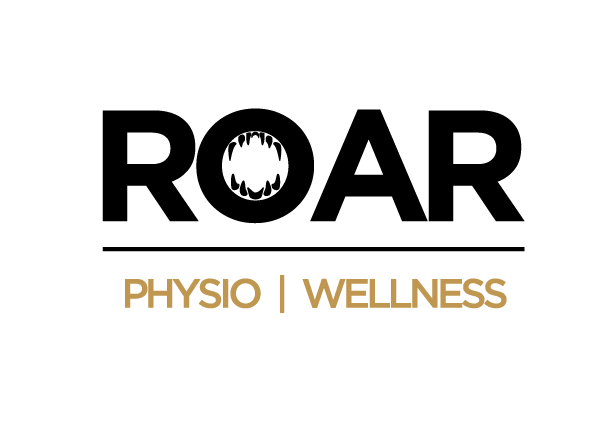Physiotherapy is a proven, science-backed approach to improving physical health, relieving pain, and enhancing mobility. Whether you’re recovering from an injury, managing a chronic condition, or striving to optimize your physical performance, physiotherapy offers tailored solutions for a wide range of needs. From targeted exercises and manual therapies to lifestyle guidance, physiotherapy focuses on treating the root cause of discomfort and preventing future issues. In this guide, we’ll explore the many facets of physiotherapy, including its benefits, applications, and how to maximize its effectiveness.
Understanding Physiotherapy
Physiotherapy is a healthcare discipline focused on enhancing physical function, mobility, and quality of life. Physiotherapists are trained professionals who assess and treat movement-related issues, often working in collaboration with other healthcare providers. Treatment plans are customized to address the root causes of an individual’s discomfort, not just the symptoms.
The cornerstone of physiotherapy lies in targeted exercises that strengthen muscles, improve flexibility, and restore range of motion. These exercises may be complemented by manual therapy techniques like joint mobilization, soft tissue massage, or dry needling. Physiotherapists may also use modalities such as dry needling or heat therapy to reduce pain and promote healing.
Additionally, physiotherapy includes education and advice tailored to a client’s lifestyle. This may involve posture correction, ergonomic recommendations, or strategies for preventing future injuries. The combination of hands-on care and client education empowers individuals to take an active role in their recovery and long-term health.
Common Conditions Physiotherapy Can Effectively Treat
Physiotherapy is incredibly versatile, addressing a wide range of musculoskeletal, neurological, and chronic conditions. Some of the most common issues treated by physiotherapists include:
- Back and Neck Pain: Whether caused by poor posture, muscle strain, or degenerative conditions, physiotherapy helps alleviate pain and improve spinal health.
- Sports Injuries: Physiotherapists are skilled in treating sprains, strains, and overuse injuries while guiding athletes through safe recovery and performance optimization.
- Arthritis: Physiotherapy reduces joint stiffness and pain associated with arthritis, improving mobility and overall quality of life.
- Post-Surgical Recovery: After surgeries like knee replacements or rotator cuff repairs, physiotherapy aids in restoring strength, mobility, and function.
- Pelvic Floor Dysfunction: Physiotherapists offer specialized treatments for issues like incontinence, prolapse, or postpartum recovery.
- Repetitive Strain Injuries: Conditions such as carpal tunnel syndrome or tendinitis are managed through targeted exercises and ergonomic adjustments.
Physiotherapy’s holistic approach ensures that treatments are tailored to the individual’s specific condition, goals, and physical abilities.
Can Physiotherapy Prevent Future Injuries?
One of the most significant advantages of physiotherapy is its role in injury prevention. By addressing the underlying factors that contribute to injuries, physiotherapy helps people develop better movement patterns, strength, and flexibility, reducing the likelihood of future issues.
For example, a physiotherapist may assess an individual’s posture, gait, or muscle imbalances to identify potential risk factors. Through targeted exercises, they strengthen weak areas, enhance joint stability, and improve overall biomechanics. Athletes, in particular, benefit from this proactive approach as it helps prevent overuse injuries and optimizes performance.
Physiotherapy also educates you on safe practices, such as proper lifting techniques, workstation ergonomics, or warm-up routines before physical activity. These strategies empower you to take control of your physical health, minimizing the risk of re-injury or chronic pain.
By combining preventive care with personalized treatment plans, physiotherapy supports long-term health and functionality.
How Long Does It Take to See Results with Physiotherapy?
The timeline for seeing results with physiotherapy depends on several factors, including the nature of the condition, the client’s commitment to their treatment plan, and the severity of the issue. Generally:
- Acute Injuries: For recent injuries like sprains or strains, improvements may be noticeable within a few sessions, often within two to six weeks.
- Chronic Conditions: Issues such as arthritis or long-standing back pain may require several months of consistent physiotherapy to achieve significant relief and improved function.
- Post-Surgical Recovery: Rehabilitation timelines vary depending on the procedure but often range from a few weeks to several months.
Consistency and adherence to the prescribed home exercise program are critical for achieving optimal results. Physiotherapy is not a quick fix but a gradual process that builds long-lasting strength, mobility, and resilience.
Regular follow-ups with the physiotherapist allow for progress monitoring and necessary adjustments to the treatment plan, ensuring the best outcomes.
Get Your Roar Back
The Role of Physiotherapy in Improving Overall Physical Performance
Physiotherapy is not only for managing injuries or pain but also for enhancing overall physical performance. Athletes, fitness enthusiasts, and individuals seeking to improve their daily physical capabilities can benefit greatly from physiotherapy.
A physiotherapist can assess your current physical state, identify areas of weakness or imbalance, and develop a program that targets these issues. For example, strengthening underused muscles, improving joint mobility, and optimizing movement patterns can lead to better athletic performance and reduced fatigue. Balance training, core strengthening, and flexibility exercises are common components of physiotherapy programs aimed at performance enhancement.
Moreover, physiotherapy often includes guidance on recovery techniques, such as effective warm-up and cool-down routines, hydration strategies, and injury prevention tips. These insights help you perform at your best while minimizing the risk of strain or injury. Whether you’re a professional athlete or simply looking to feel stronger and more capable in your daily life, physiotherapy can help you unlock your full physical potential.
Are There Any Conditions Where Physiotherapy May Not Be Effective?
While physiotherapy is highly effective for many conditions, there are scenarios where it may have limited impact. Here are some situations where physiotherapy may not be the most effective solution:
- Severe Structural Damage: Conditions like complete ligament tears or advanced degenerative joint diseases may require surgical intervention before physiotherapy can provide meaningful benefits.
- Congenital Abnormalities: Structural abnormalities present from birth often need specialized medical or surgical treatment beyond what physiotherapy can offer.
- Advanced-Stage Systemic Conditions: In cases such as late-stage cancer or severe metabolic diseases, physiotherapy may provide supportive care but cannot address the root cause of symptoms.
- Non-Adherence to Treatment Plans: Physiotherapy requires consistent effort and adherence to prescribed exercises. Without commitment, progress may be minimal or nonexistent.
- Acute Medical Emergencies: Situations like fractures or life-threatening conditions often require immediate medical or surgical care, making physiotherapy unsuitable as an initial treatment.
It’s essential to consult with healthcare providers to determine whether physiotherapy is appropriate and beneficial for your specific condition.
Lifestyle Changes to Help Support the Effectiveness of Physiotherapy
Incorporating the right lifestyle changes can significantly enhance the outcomes of your physiotherapy sessions. Here are some key practices to support your recovery and long-term health:
- Maintain Good Posture: Whether sitting, standing, or sleeping, proper posture reduces strain on your muscles and joints, complementing the alignment and mobility goals of physiotherapy.
- Stay Active Between Sessions: Engage in light, low-impact activities such as walking or stretching to keep your muscles engaged and maintain flexibility between physiotherapy appointments.
- Eat a Balanced Diet: Proper nutrition supports tissue repair and overall recovery. Include plenty of lean protein, fruits, vegetables, and anti-inflammatory foods to fuel your body.
- Hydrate Regularly: Staying hydrated keeps your muscles and joints lubricated and flexible, enhancing the benefits of your exercises.
- Get Adequate Rest: Quality sleep is essential for muscle recovery and overall healing. Aim for 7-9 hours per night to give your body the rest it needs to repair.
- Incorporate Mindfulness Practices: Techniques like yoga or meditation can reduce stress, which may improve your focus and engagement during physiotherapy.
- Avoid Overexertion: While staying active is important, overloading your body can hinder progress. Follow your physiotherapist’s guidance on exercise intensity and frequency.
By adopting these lifestyle habits, you can create an environment where physiotherapy is more effective, helping you recover faster and maintain long-term physical health.
Don’t Let Pain Be Your Reality
Take control of your health and mobility with physiotherapy. Whether you’re recovering from an injury, improving your physical performance, or looking to prevent future issues, physiotherapy can help you achieve lasting results.
At Roar Physio | Wellness, our dedicated team is here to guide you with personalized care and evidence-based treatment plans. Contact us today to book an appointment and take the first step toward a healthier, more active life!

